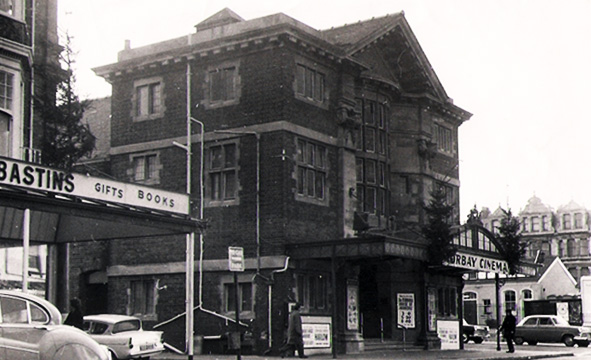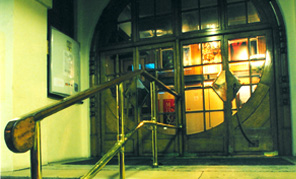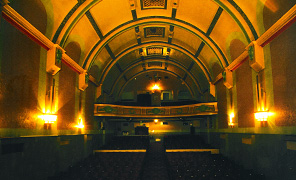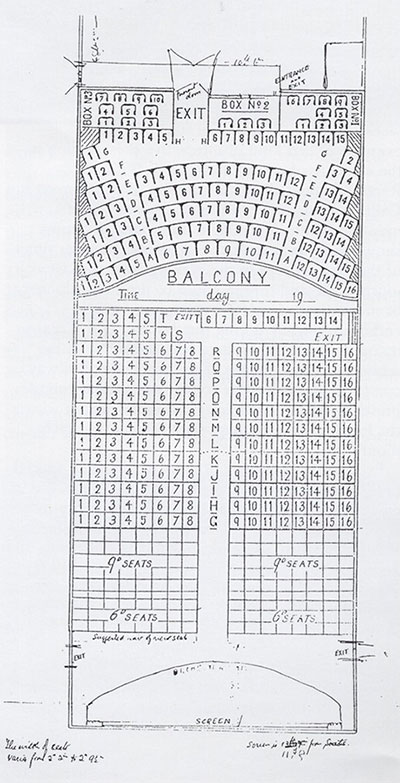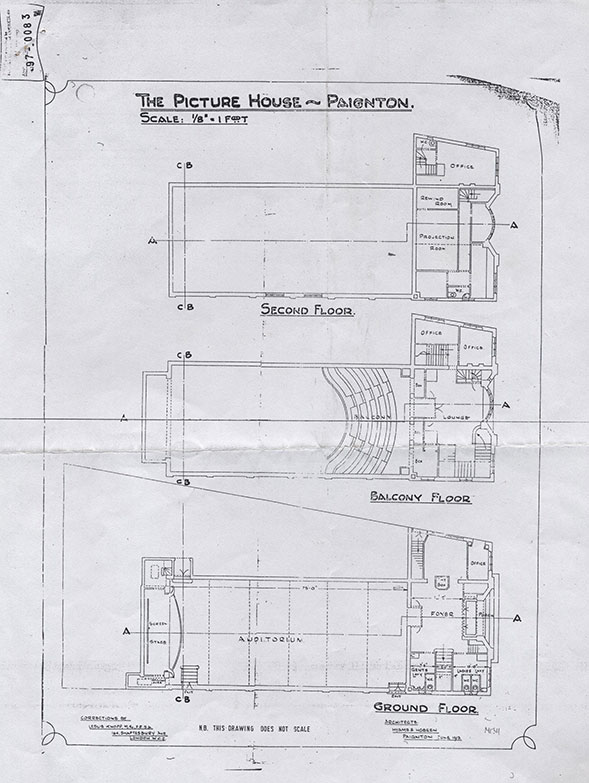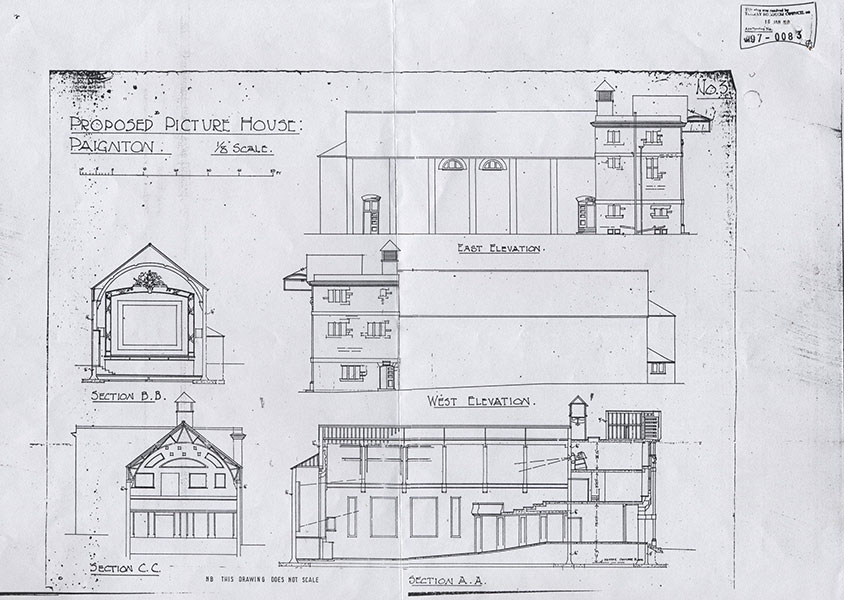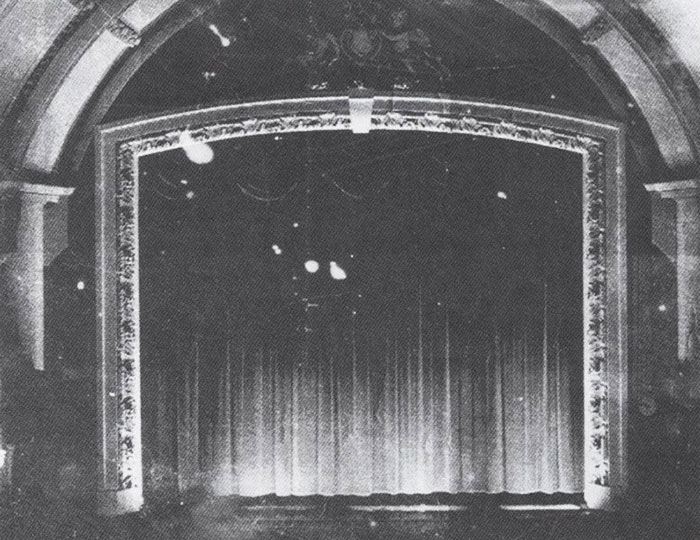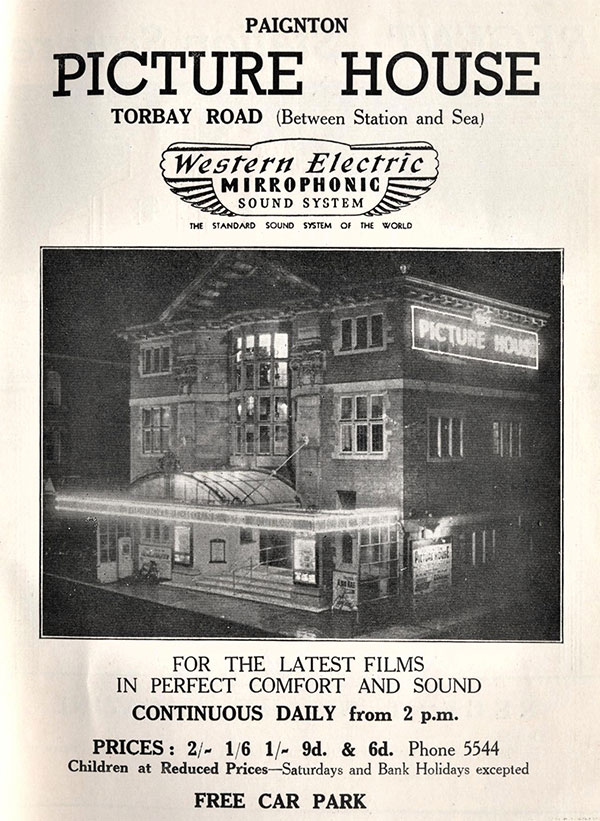 The Paignton Picture House was built on the site of the Broadmead Hotel, next to the Paignton railway station. A consortium of businessmen, including one of the architect Mr D.J. Hobgen and the builder Herbert Drew, decided to purchase the hotel from the owner, Mr Lambshead in 1913 and agreed £5,000 should be raised by issuing 4995 ordinary shares and 5 founders shares to form a new company called the Paignton Picture House Ltd. The hotel was then demolished to make way for the new cinema. Herbert Drew started building, once the floating foundations were complete, in July 1913. This type of foundation was used throughout the area, as this had once been marshland up until the railway arrived in 1859. Evidence exists to confirm the building work was completed in early 1914 and was opened in March 1914. It was built to The Cinematography Act 1909, which introduced fire proof projection boxes, due to the number of fatal fires caused by the flammability of nitrate film. This was also one of the first cinemas to have a ventilation system, which could be heated in the winter months. Many purpose built cinemas opened between 1910 and 1914, but the Paignton Picture House is one of the only survivors. As you approach the picture house you can see there is a curved stained glass window running from the first floor to the roof, set between Corinthian pilasters. The vine and grape glass pattern is meant to be lit from the inside and seen from the outside in order to entice people in. Enter through the unique circular shaped entrance and you will see the building still retains much of the original architecture. As you enter the main auditorium you start to travel back in time and your eye is directed to the barrel vaulted roof supported by pilasters, each topped with a cartouche of a face from the entertainment industry - one of which is Douglas Fairbanks as Moses, there are also crests which are from old film companys. You walk down the centre isle where back in the very early days it was called the "Electric Bioscopic Exhibition Centre with Entertainment Suitable for Ladies" - gentleman would be seated on the right and ladies on the left. The screen in front of you was altered in the late 1950's when cinemascope arrived, but other than that very little else has changed. When you reach the screen and turn around you can then really appreciate the beauty of this little cinema, with its curved balcony and all its art deco decoration. Up at the back of the balcony you can see the three private boxes, used by the rich and famous of the time including Paris Singer (son of Isaac Merritt Singer of sewing machine fame), who would be accompanied by his mistress Isadora Duncan, and it is rumoured that Edward, Duke of Windsor, and Mrs Simpson used the boxes whilst courting in Torquay. We also must not forget the most famous patron of all, Agatha Christie. She would often visit the Picture House and would sit in row two, seat two, in the circle. In many of her books, whenever the Gaiety Cinema is mentioned it is actually the Paignton Picture House that she is speaking of. In 1987 the cinema was taken over by the Dart Valley Steam railway whose Paignton Station entrance is alongside. They had a grandiose idea for using the cinema as a booking hall on the lines of The Grand Central Station in New York. Their plans for this were thwarted when Torbay Council and English Heritage became involved, with the Picture House being declared a Grade II listed building in 1991. It continued as a cinema until 26th September 1999 when it finally closed due to a number of reasons - one of which was that the Festival Theatre on the sea front was converted into a multiplex. It has remained closed since then with only the minimum care and attention being given to it by its owners. No heating through the winter months in a building over time will start to cause deterioration and, if left for too long, irreversible damage to the internal fabric of that building. Left - Original stage and screen area. Right - Original drawings dated 1913 |
...the most famous patron of all, Agatha Christie, would often visit the Picture House and sit in row two, seat two, in the circle.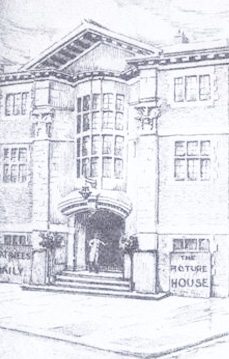 Paignton Picture House in its earlist days
A poor quality view (one of only two to survive) showing the original proscenium and the crest above. Both were removed when CinemaScope was installed in the mid-1950s.
A pamphlet advertising the cinema which includes an undated night exterior, with the former neon sign on the side wall facing the station and the original glass canopy
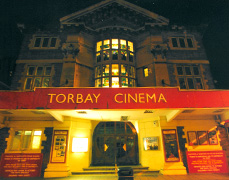 Paignton Picture House not long before it closed at the end of the 20th century
|


